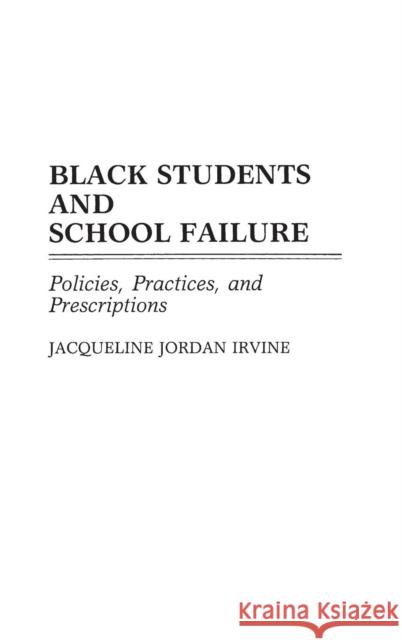Black Students and School Failure: Policies, Practices, and Prescriptions » książka
Black Students and School Failure: Policies, Practices, and Prescriptions
ISBN-13: 9780313272158 / Angielski / Twarda / 1990 / 168 str.
Black Students and School Failure: Policies, Practices, and Prescriptions
ISBN-13: 9780313272158 / Angielski / Twarda / 1990 / 168 str.
(netto: 220,50 VAT: 5%)
Najniższa cena z 30 dni: 228,69
ok. 30 dni roboczych.
Darmowa dostawa!
Research findings by the National Commission on Excellence, the Children's Defense Fund, and the College Board, among others, suggest that much work remains to be done to upgrade the educational experience and performance of the fastest growing segment of the American school population, blacks and other minorities. This country's survival and strength will ultimately depend on the quality of education given to this important group that has been systematically and effectively excluded from the benefits of educational opportunity. Without these benefits, blacks and other minorities will never achieve economic independence, and the self-perpetuating cycle of poor school achievement, poverty, and teen parenthood will grind on relentlessly. This important study addresses the many facets of this complex problem by explicating its many roots, assessing strengths and weaknesses inherent in the present system, and proposing strategies for dynamic changes.Chapter 1 reviews various societal prescriptions regarding education and descriptive practices harmful to black students and uncovers a hidden curriculum. The focus of Chapter 2 is on cultural synchronization in style, language, and cognition and on how disappearing black educators increase the lack of synchronization. Chapters 3 and 4 detail the effects of teacher expectations in various contexts including grade level, subject, and time of year, and present a thorough research study of teacher-student interactions. The last two chapters outline strategies for change and implications for training and staff development exploring Afro-centric responses, parent involvement, relevant research findings, and various staff development competencies for policy development and prejudice reduction. The detailed introductory essay, the seven tables and five figures, and an appendix that provides supplemental information describing the research study methodology in Chapter 4 complete this valuable volume. Scholars and students of Afro-American and African Studies, as well as educational administrators and practitioners will find this work both timely and provocative.











